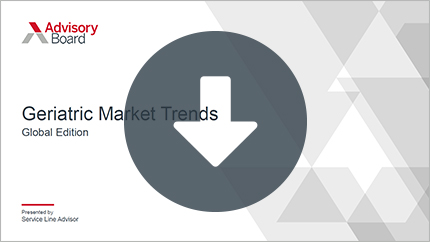Auto logout in seconds.
Continue LogoutThe ordinary muscle loss that happens with age can put you at an increased risk of serious health problems, but that loss can be prevented by following an evidence-backed muscle-building routine, Anahad O'Connor writes for the New York Times.
Why muscle mass is so important
Research has linked muscle mass to longevity. In a 2014 study from the University of California, Los Angeles' medical school, researchers followed about 4,000 healthy adults over the age of 55 and found that those with the highest muscle index also had the lowest mortality rates, while those with the lowest muscle index had the highest mortality rates, O'Connor writes. They concluded that muscle index was a better predictor of premature death than even obesity.
Similarly, a study of over 2,200 middle-aged men found that being active and having "good muscle strength" was one of the strongest predictors of a longer lifespan. Other studies, O'Connor writes, have linked increased muscle mass to better cardiovascular health, a lower risk of death from cancer, and a lower risk of developing Type 2 diabetes.
Muscle mass is also inextricably linked to bone strength, according to Wayne Westcott, a professor of exercise science at Quincy College in Massachusetts. "The bones, muscles, ligaments, and tendons in your musculoskeletal system all work together, and they either become stronger together or weaker together," he said. "Whenever you lose muscle you automatically lose bone—they go hand in hand."
As a result, O'Connor writes, losing muscle mass can put you at a greater risk of:
- Arthritis;
- Chronic back pain;
- Fractures;
- Frailty; and
- Osteoporosis.
Greater muscle mass can also help you lose weight and keep it off. A recent study observed the effects of various diet and exercise programs on 250 people over the age of 60. They found that the people who combined diet and exercise together (as opposed to just one of the two) lost the most weight—around 20 pounds on average. But the type of exercise mattered: People who did aerobic exercise lost about 16 pounds of fat and four pounds of muscle, while the people who did resistance training—a form of exercise focused on muscle building—lost 18 pounds of fat and just two pounds of muscle.
How resistance training can help
Resistance training, which involves contracting a muscle against strong resistance and can include weightlifting as well as resistance-band training, has been proven to help build muscle mass effectively, O'Connor writes. Brad Schoenfeld, an assistant professor of exercise science and the director of the Human Performance Laboratory at Lehman College, said, "Resistance training is the closest thing to the fountain of youth that we have."
That's backed up by research. One study from the Buck Institute for Research on Aging found that just two resistance training sessions a week could reverse cellular damage caused by age that contributes to sarcopenia and functional impairment.
How to build muscle
The most important thing to know when it comes to building muscle is that "your muscles will not grow unless you give them a good reason," O'Connor writes. The number of repetitions you do in your resistance training doesn't necessarily matter, as long as your muscles are exhausted.
"Resistance training is about training hard—if you don't push yourself, you won't see much benefit," Schoenfeld said. "That doesn't mean you need to train until that vein in the side of your head is bulging like a serpent. But you do need to come pretty close to all out failure on each set."
O'Connor recommends two ways to lift weights:
- Find the heaviest amount of weight you can lift—referred to as your "1-Rep Max"—then use a weight that's at least 80% of that maximum and do about eight to 12 repetitions in each set; or
- Determine your 1-Rep Max, then use a weight that's about 30 to 50% of that maximum and do up to 25 repetitions in each set.
It's also important to do these exercises at least twice a week, O'Connor writes. Multiple studies have shown that doing two resistance training sessions each week for 10 weeks can improve your blood pressure, reduce your body fat, and increase your muscle size and strength.
Schoenfeld also emphasizes that you need to train all the muscles in your body, rather than just focusing on a few. "You really need to train your entire body, and you really need to challenge your muscles regardless of your routine," he said. "Otherwise, you will plateau very quickly" (O'Connor, New York Times).
Don't miss out on the latest Advisory Board insights
Create your free account to access 1 resource, including the latest research and webinars.
Want access without creating an account?
You have 1 free members-only resource remaining this month.
1 free members-only resources remaining
1 free members-only resources remaining
You've reached your limit of free insights
Become a member to access all of Advisory Board's resources, events, and experts
Never miss out on the latest innovative health care content tailored to you.
Benefits include:
You've reached your limit of free insights
Become a member to access all of Advisory Board's resources, events, and experts
Never miss out on the latest innovative health care content tailored to you.
Benefits include:
This content is available through your Curated Research partnership with Advisory Board. Click on ‘view this resource’ to read the full piece
Email ask@advisory.com to learn more
Click on ‘Become a Member’ to learn about the benefits of a Full-Access partnership with Advisory Board
Never miss out on the latest innovative health care content tailored to you.
Benefits Include:
This is for members only. Learn more.
Click on ‘Become a Member’ to learn about the benefits of a Full-Access partnership with Advisory Board
Never miss out on the latest innovative health care content tailored to you.

